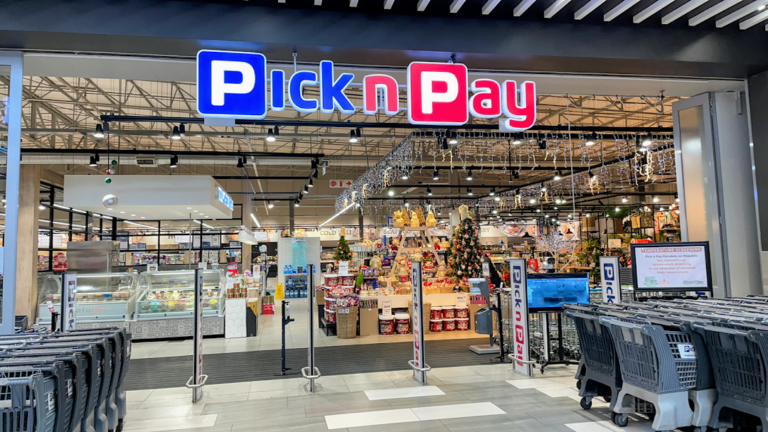Lessons from Pick n Pay: Balancing Mass Appeal and Premium Markets

Lessons from Pick n Pay: Balancing Mass Appeal and Premium Markets. Pick n Pay, a cornerstone of South Africa’s retail landscape, has navigated the delicate balance between serving the everyday needs of the masses and catering to the expectations of premium customers. This approach has not only kept the brand relevant in a competitive market but has also established it as a household name across multiple customer segments. The journey of Pick n Pay is a masterclass in strategic positioning, resilience, and innovative marketing.
The Pick n Pay Story: From Modest Beginnings to Market Leader
Founded in 1967 by Raymond Ackerman, Pick n Pay started as a small family-owned business in Cape Town. Ackerman’s vision was to provide high-quality goods at affordable prices—a principle that became the foundation of the company’s identity. Over the decades, Pick n Pay evolved into one of South Africa’s largest retail chains, expanding its reach to other African countries and even beyond the continent.

Strategies That Defined Pick n Pay’s Success
A Dual-Focus Market Strategy
Pick n Pay recognized early on that its customer base was diverse, encompassing both budget-conscious shoppers and premium customers. To address this, the company segmented its offerings into budget-friendly lines and premium products under labels like “Pick n Pay Finest.”
Lesson: Acknowledge the diversity within your market and create targeted offerings to meet the distinct needs of each segment.
Commitment to Customer-Centric Values
Raymond Ackerman’s leadership emphasized a customer-first philosophy, ensuring that service excellence became synonymous with the Pick n Pay brand. This commitment extended to affordable pricing and consistently fresh produce, fostering loyalty among shoppers.
Lesson: Building trust through customer-centric values lays the groundwork for enduring loyalty.
Expansion Through Innovation
The company introduced hypermarkets and convenience store formats to adapt to changing consumer preferences. Additionally, it embraced online retail early, launching its e-commerce platform to cater to tech-savvy and convenience-focused customers.
Lesson: Stay ahead of the curve by innovating to meet evolving consumer needs.
Leveraging Loyalty Programs
The Smart Shopper program, one of South Africa’s most successful loyalty schemes, became a cornerstone of Pick n Pay’s customer retention strategy. Offering personalized discounts and rewards, it strengthened customer relationships and encouraged repeat business.
Lesson: Loyalty programs can deepen customer engagement and drive consistent revenue.
Investing in Sustainability
Pick n Pay has championed sustainability initiatives, including reducing plastic waste and supporting local farmers. These efforts appeal to environmentally conscious consumers while reinforcing the brand’s corporate social responsibility.
Lesson: Sustainability can be a powerful differentiator in building brand equity.

Challenges Faced and Lessons Learned
Striking the Balance
Maintaining a dual-market strategy posed challenges, particularly in aligning the company’s messaging to appeal to both budget-conscious and premium customers. The risk of diluting its brand identity required strategic finesse.
Lesson: A clear, unified brand message can bridge diverse customer segments effectively.
Responding to Competition
As international giants like Walmart entered the South African market, Pick n Pay faced increased competition. It responded by refining its product mix, investing in private labels, and enhancing its customer experience.
Lesson: Continuous adaptation to competitive pressures ensures long-term relevance.
Economic Volatility
South Africa’s economic challenges impacted consumer spending power. Pick n Pay navigated this by focusing on affordability without compromising quality, thereby retaining customer trust.
Lesson: Agility in pricing strategies can help businesses weather economic downturns.

Lessons for Entrepreneurs
- Understand Your Market: Pick n Pay’s success lies in its ability to cater to multiple customer segments without compromising its core values. Entrepreneurs should aim to deeply understand their target audience.
- Adapt and Innovate: Whether through online expansion or new store formats, Pick n Pay embraced change to stay ahead. Innovation should be at the heart of any growth strategy.
- Build Trust Through Consistency: Customers value brands that consistently deliver on their promises. Trust is a long-term asset that drives loyalty.
- Respond to Feedback: Pick n Pay’s evolution often reflected its responsiveness to consumer needs and market demands. Listening to your customers can provide invaluable insights.
- Invest in Loyalty: Programs like Smart Shopper not only reward customers but also provide data-driven insights to refine business strategies.
Pick n Pay’s journey offers a compelling example of how to build a brand that resonates across diverse markets while staying true to its core values. By balancing mass appeal with premium offerings, investing in innovation, and prioritizing customer relationships, the brand has solidified its position as a leader in the retail industry.




